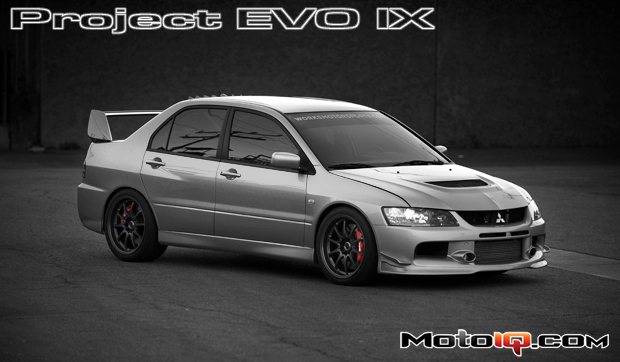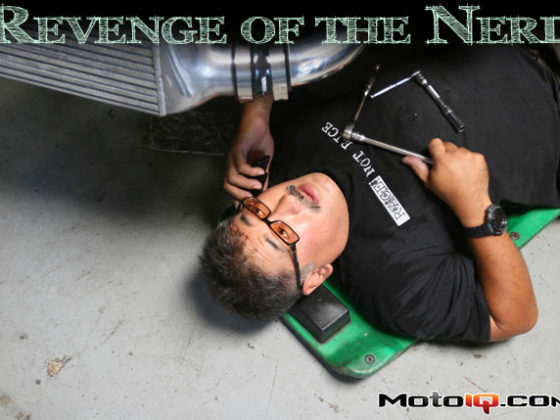,
 |
The rear rotors of the Brembo GT kit at 328mm or 12.9 inches are equally huge compared to stock.
|
Driving to the track and switching the pads before starting out is not that big of a deal but the hassles of registration and mandatory drivers meetings make race mornings somewhat hectic without having to scramble to switch pads. Afterall, most of us don’t have a pit crew to help out on track days. What we wanted were some brakes that had enough capacity so that we could drive to and from the track and run all on the same set of pads. To stop 3,200 lbs of EVO with streetable pads meant going big, real big.
Many companies make upgraded brake systems for EVOs but we chose to stick with Brembo’s GT kits to upgrade our front and rear brakes for several reasons. The first reason was engineering. Brembo is an OEM supplier and their brakes meet stringent OEM quality standards. Brembo is standard equipment for most of the exotic cars built on the road and most ultra high performance road cars for that reason. Brembo is also one of the standards in braking performance in the motorsports world, from F1 to MotoGP. The second reason is that our car is being built to be a bit of a sleeper with all of the mods having a low visual profile from the outside. Although our brake system is quite eye catching, so is the stock Brembo system! The uninitiated can easily overlook our brakes.
When evaluating front brake kits we chose Brembo’s top of the line GT kit with a huge 355 mm front rotor and huge 6 piston monoblock front calipers. This is the biggest thing they could fit under our 18″ Volk CE28N wheels. One of the best things a genuine Brembo kit has over many other performance brake kits is that the Brembo kit is engineered to maintain the correct hydraulic proportioning. Brembo matches the caliper piston diameters so that the correct hydraulic ratio of front to rear braking force will be maintained in all of their kits. A side benefit of having proper piston matching is that the pedal stroke will stay correct as well. Many other kits simply use an off the shelf racing caliper, usually with more piston area than stock. This results in the brake system having too much brake bias and a mushy long brake pedal to boot. Poorly engineered kits often have significantly worse stopping distances than stock for this very reason! We once suffered driving an EVO for an unnamed company in an EVO tuner shootout event and were dismayed to find that the fancy looking huge brake system on the car was way worse than stock for this very reason.
 |
The rear 4 piston calipers are so much bigger than the stock two piston units that the overall weight of the rear brakes is 4 pounds heavier than stock. Subtracting the two pounds lighter of the front brakes leaves us with an overall weight gain of only two pounds. Not bad for the quantum leap in brake power we gained. As in the brakes, the rear brakes now have a pad over twice as big as the stock pads. This will make for much longer life and much better track performance.
|
Brembo calipers also feature differentially sized pistons. What this means is that the front, leading edge pistons are smaller in diameter than the trailing pistons. The reason this is done is to reduce taper wear of the brake pads. Brake pads, especially long pads like the ones found in our front calipers tend to use and wear the leading edge of the brake pad more heavily than the trailing edge. The front leading edge of the pad bites harder and wedges itself to the rotor due to the tipping moment (or lever arm in non engineer speak) between the wearing surface of the pad and its backing plate resting against the caliper piston. The rear area of the pad is somewhat unloaded due to this phenomenon and is also lubricated by the boundary gasses of the vaporizing pad material created by the leading surface of the pad. This results in the front surface of the pad wearing faster than the rear, or taper wear. With differential piston sizing, the hydraulic force is less in the front with its smaller pistons and greater in the rear of the pad with the larger pistons. This compensates for the uneven forces acting on the brake pads which will now wear evenly across their face. In some cases the brakes will actually be capable of producing more braking force as well since the pad is being used more efficiently.
 |
The rear brake hats have an integral drum for the parking brakes.
|



